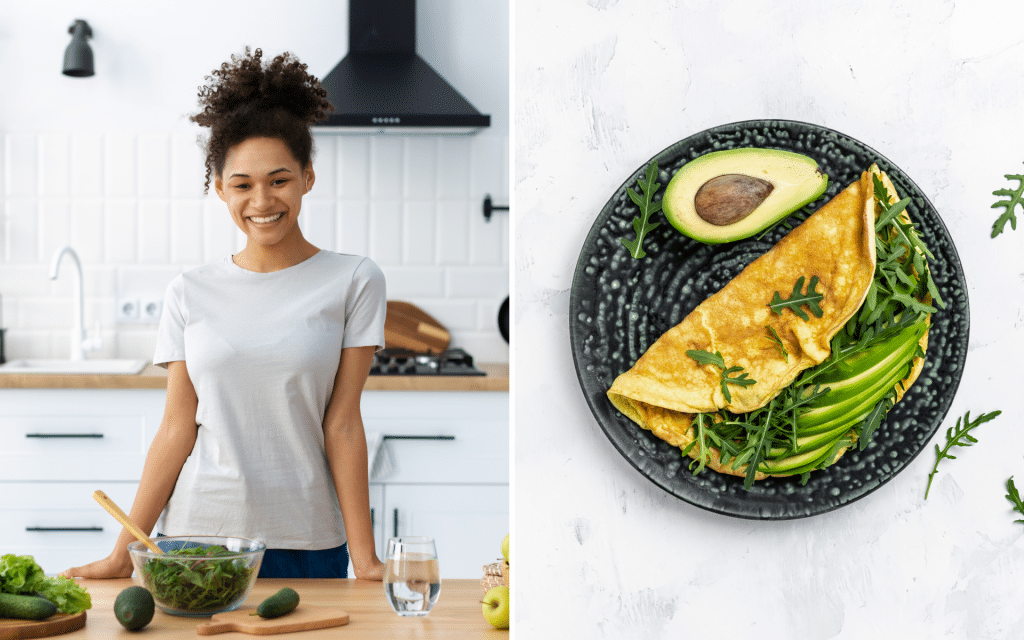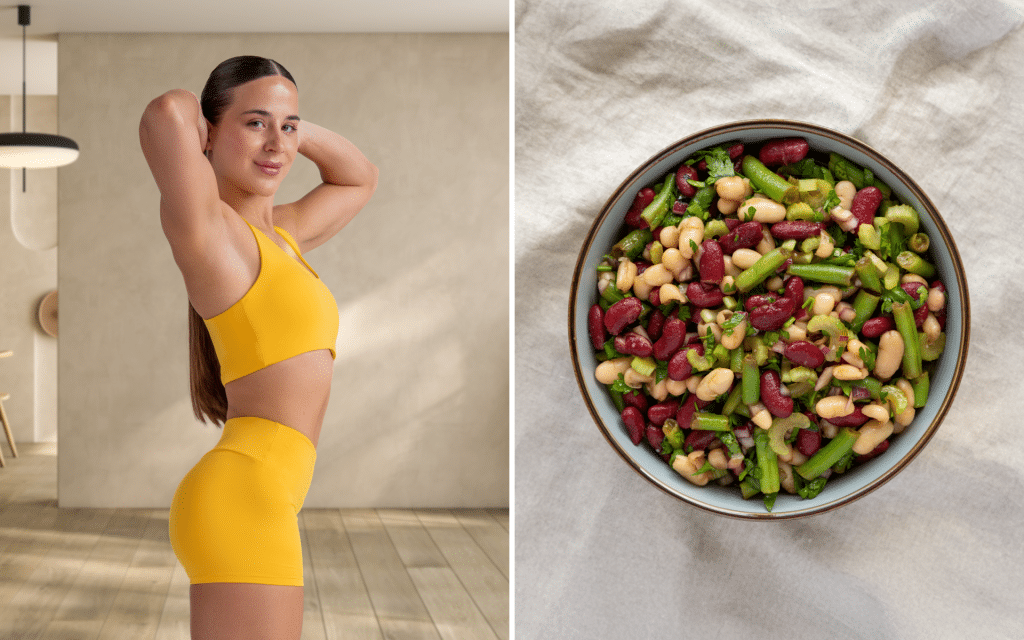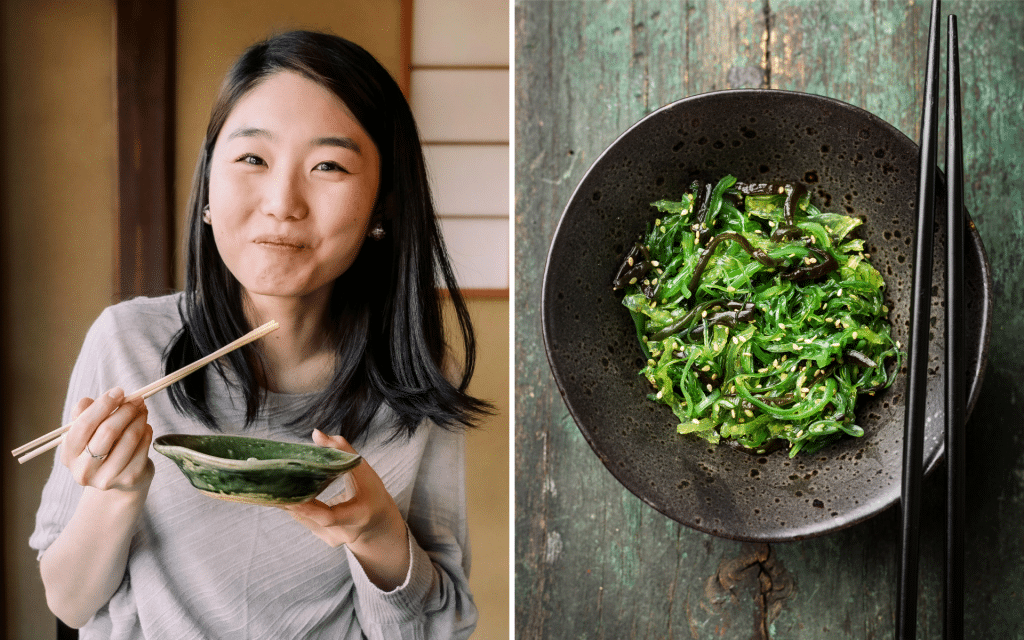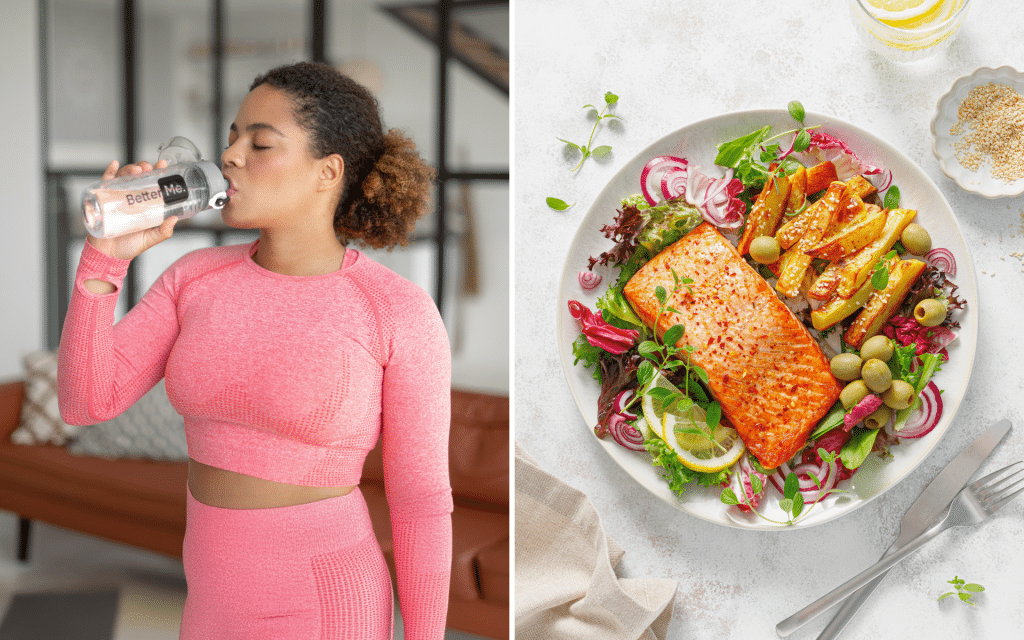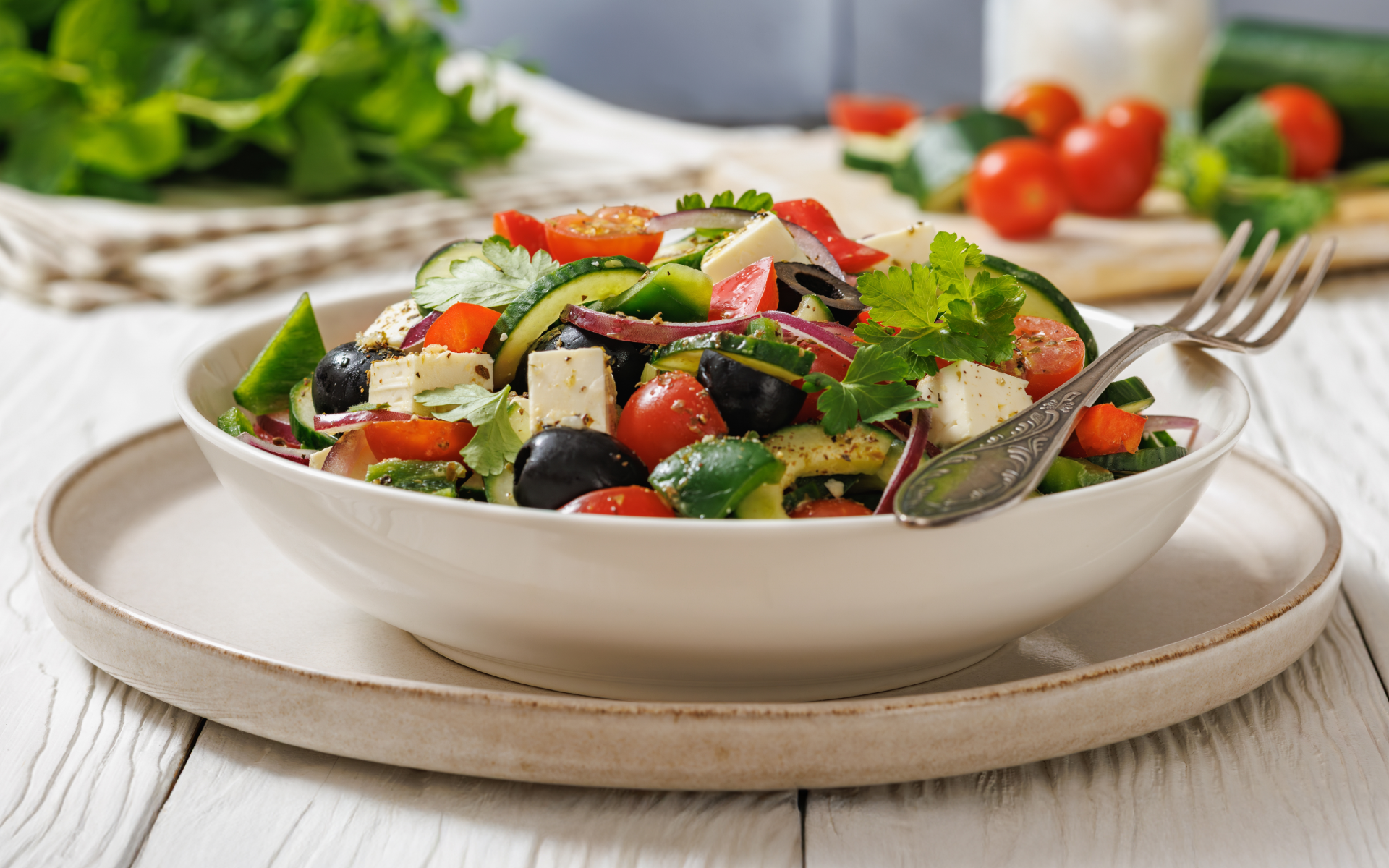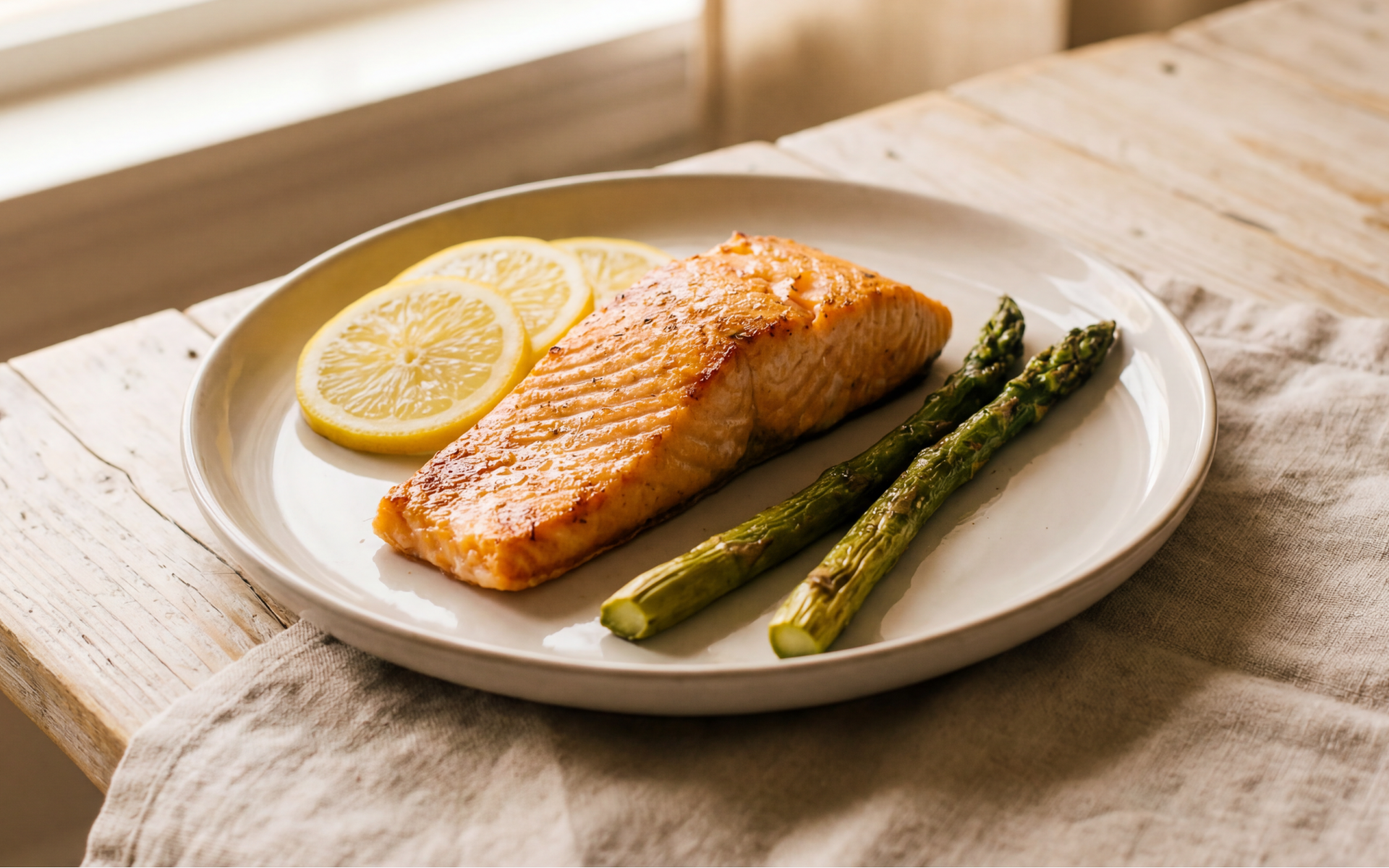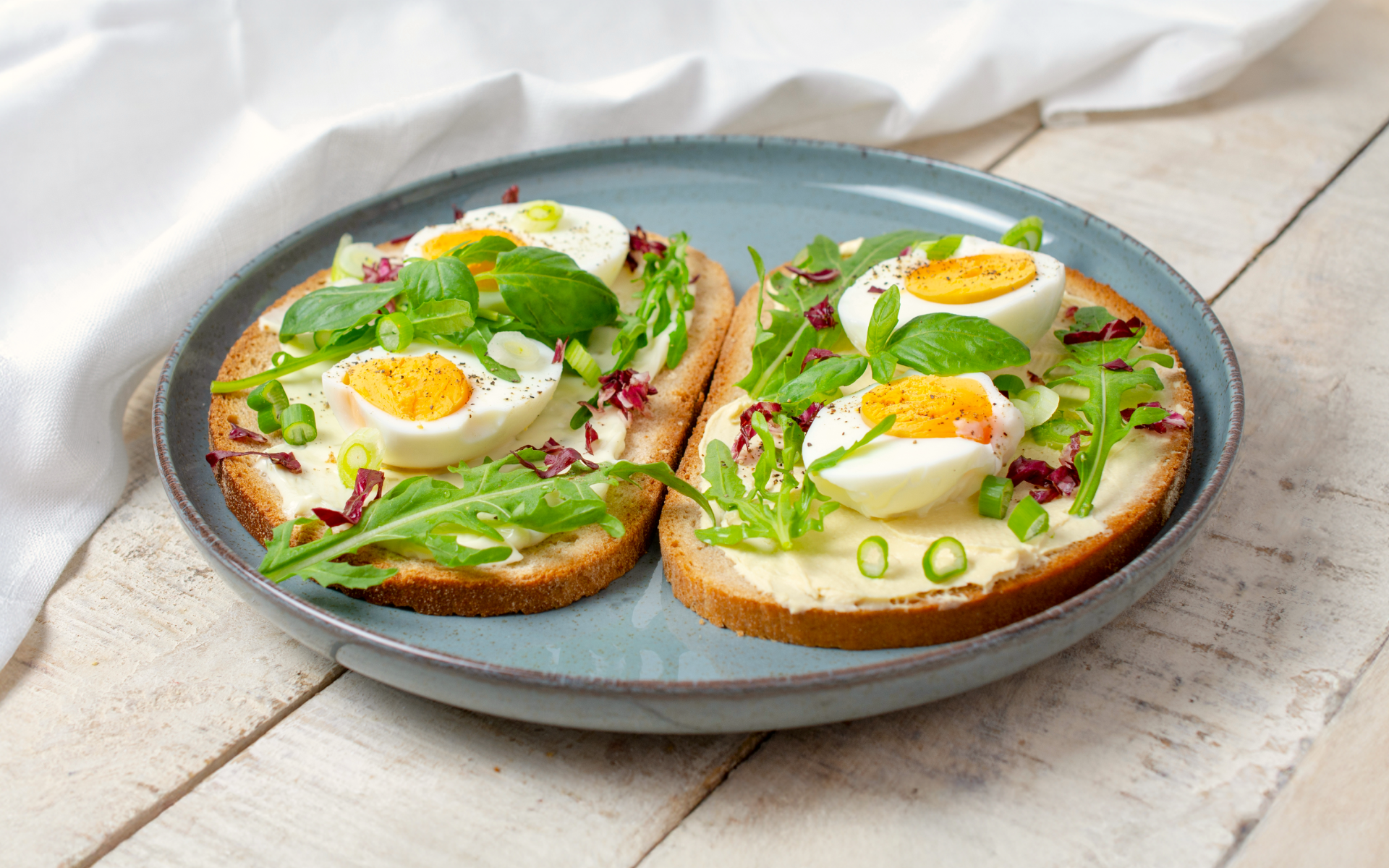Are you considering making a significant change in your eating habits?
If you’re looking for a plan that may help reduce cravings and jumpstart weight loss, this 10-day no-carb, no-sugar diet plan might sound appealing.
This dietary pattern reduces the intake of added sugars and most carbohydrate sources, focusing primarily on protein-rich, healthy fats, and fiber-rich foods that may help stabilize blood sugar levels and naturally curb hunger.
However, restrictive diets like this are not ideal nutritionally in the long term and are not safe for everyone, so talk to your doctor first if you have any health conditions or concerns.
This guide will cover everything you need to know, from understanding what happens when you cut carbs and sugar to a complete 10-day no-carb, no-sugar diet meal plan and no-carb no-sugar diet food list. Let’s dive in!!
What Is A Practical 10-day No-Carb, No-Sugar Diet Menu Plan?
A practical no-carb, no-sugar diet plan should focus on whole foods, such as lean animal proteins, non-starchy vegetables, healthy fats, and herbs and spices.
It will exclude all grains, fruits, pulses, starchy vegetables, most dairy, and all sources of added or natural sugar.
Let’s see in detail what “No-Carb, No-Sugar” really means.
You will remove from your diet:
- All added sugars, including white and brown sugar, honey, maple syrup, agave, and artificial sweeteners.
- Natural sugars, such as fruits, juices, sweet vegetables, and most dairy products.
- All grains and starches, including bread, flour, pasta, rice, oats, corn, and potatoes.
- Legumes, such as beans, lentils, and chickpeas, as well as any products made from them.
- Most fruits, except for small amounts of low-sugar fruits like olives or avocados.
- Milk and yogurt, due to the presence of lactose, a natural sugar.
What we’ll focus on during this diet:
- Animal proteins of all kinds, such as beef, poultry, fish, eggs, pork, and game meat.
- Non-starchy vegetables, including leafy greens, cruciferous veggies, zucchini, etc.
- Healthy fats like olive oil, avocado, nuts, and seeds.
- Fermented foods, such as sauerkraut and kimchi, as long as they don’t contain any added sugars.
- Seasonings include various herbs, spices, mustard, and vinegar.
Read more: How A Healthy Meal Planning App Can Change The Way You Eat Forever
What Key Aspects Should I Consider When Following A No-Sugar, No-Carb Diet?
Changing our eating habits can be challenging, but it can also yield significant benefits.
However, some planning and key aspects are necessary to succeed.
Meal Prep Is Essential
Without preparation, it’s far too easy to reach for packaged or carb-heavy foods.
If you dedicate a few hours each week to meal prep, you’ll see how it can be a game-changer.
Things you can prepare in advance to have ready include:
- Hard-boiled eggs
- Roasted vegetables
- Grilled chicken or beef patties
- Washed and chopped salad greens.
Be sure to store meals in airtight containers, and keep dressings and fats separate until ready to eat.
Reasons why BetterMe is a safe bet: a wide range of calorie-blasting workouts, finger-licking recipes, 24/7 support, challenges that’ll keep you on your best game, and that just scratches the surface! Start using our app and watch the magic happen.
Read Labels Carefully
Even “healthy” foods, such as jerky, mustard, or pre-cooked meats, can contain added sugars or starches.
When buying packaged foods, look for the “0g sugar” or “no maltodextrin, dextrose, corn syrup, or modified starch” note.
Eat Enough Fat
Since we’re reading our carb intake, we need to get enough energy for our day-to-day activities from fat, as it’ll become our primary source.
Don’t be afraid to cook with oils or add a tablespoon of butter or avocado to your meals.
This fat in your meals helps maintain energy and avoids hunger spikes.
Keto Flu Symptoms
It’s normal to experience some symptoms within the first 2–4 days, including headaches, moodiness, fatigue, and intense cravings.
It’s crucial to be mentally prepared and know how to handle them:
- Get extra sleep
- Drink plenty of water.
- Stay full, listen to your hunger cues.
- Apply stress management techniques as your body adapts.
How To Eat No-Sugar And No-Carbs?
Eating no-sugar and no-carbs involves quite a strict approach that removes both added sugars and nearly all carb-containing foods. These foods include grains, fruits, legumes, and many vegetables.
Here are a few key aspects to keep in mind to accomplish this effectively and safely:
- Start by removing obvious sources of sugar and carbohydrates, such as bread, pasta, rice, cereals, sweets, baked goods, sugary drinks, fruit juices, and most processed foods.
- Avoid starchy vegetables, such as potatoes, corn, peas, and legumes like lentils and beans.
- Only add non-starchy vegetables to meals, such as leafy greens, broccoli, cauliflower, zucchini, mushrooms, and cucumbers. They are good choices, as they are low in carbs and high in fiber and micronutrients.
- Fruits are generally off-limits, except in small amounts (like a few berries) if you aim to be slightly more flexible.
- Plan your meals around animal proteins and healthy fats to ensure satiety, and fats will provide energy in the absence of carbs.
What Happens When You Don’t Eat Carbs Or Sugar For 10 Days?
Removing carbs and added sugars from our diet can have some noticeable effects even if we only do it for 10 days.
When we stop eating carbs and sugar for 10 days, our body undergoes significant metabolic and hormonal changes.
- In the first few days, we’ll use the stored glycogen in our liver and muscles, which can lead to rapid weight loss; however, this is primarily due to water loss.
- At the same time, we may experience fatigue, headaches, irritability, and cravings, especially if we had been consuming a lot of carbohydrates beforehand. This fatigue is a normal adjusting stage due to the lack of glucose, our brain’s primary energy source, which comes from carbs and sugars.
- Yet, these symptoms should subside once our body begins adapting to using fat for fuel (1). If they don’t go away, talk to your healthcare provider.
Some of the early changes you may experience include:
- Increased energy
- Less cravings
- Less bloating
These benefits can motivate you to keep adding more days to this diet plan.
One of the first noticeable benefits might be improved blood sugar management.
Reducing added sugar intake and increasing fiber can improve insulin sensitivity, reducing the long-term risk of type 2 diabetes (2, 3). However, you don’t need to cut out all carbs for this benefit.
Cutting added sugars also helps reduce our calorie intake, as these foods often contribute empty calories without providing a sense of satiety.
Eating fewer calories can support gradual weight loss and help reset hunger signals.
Moreover, reducing added sugar intake can also help lower inflammation, a condition that plays a key role in the development of many chronic conditions (4, 5, 6).
While sugar isn’t the only factor, reducing it can help lower inflammatory markers, especially when combined with other healthy habits, such as getting sufficient sleep, managing stress, and engaging in regular physical activity.
Again, you don’t need to eliminate all carbs for this benefit, and it’s ideal if you still include healthy, complex-carb, and fiber-rich foods like whole grains, starchy vegetables, and legumes.
Can You Lose Weight On A No-Carb, No-Sugar Diet?
Reducing carbs and added sugar intake can lead to weight and belly fat loss, especially when part of an overall healthy lifestyle that includes regular exercise and a balanced diet.
When we eliminate carbohydrates and sugars, our body no longer relies on glucose as its primary source of energy. Instead, it starts burning fat for fuel, a metabolic state called ketosis. This fat-burning effect can lead to rapid weight loss, especially in the initial days, as you deplete your glycogen stores; however, this is primarily due to water weight loss (7).
Additionally, eliminating carbs and sugars often means avoiding highly processed foods and high-calorie snacks, which naturally reduces your overall calorie intake.
Reduced calorie intake is a key factor in weight loss.
Without the blood sugar spikes caused by simple carbs and sugars, we may experience fewer cravings and more stable energy levels throughout the day, making it easier to stick to the diet (8).
However, it’s essential to approach a no-carb, no-sugar diet thoughtfully.
Eliminating all carbohydrates isn’t always sustainable or necessary, and some carbs—like those found in vegetables—are essential for good health.
Additionally, how much weight can you lose in 10 days from no carbs or sugar?
Individual responses vary because the amount of weight loss differs from person to person.
Read more: Healthy Fitness Meals to Fuel Your Workout Every Day
What Foods Have No Carbohydrates and No Sugars?
Here are the top 10 no-carb foods without sugar to add daily:
- Eggs
- Chicken and turkey
- Vinegars and mustard.
- Shellfish: shrimp, crab, and lobster
- Fish: salmon, tuna, sardines, and trout.
- Beef and Pork: ground, steaks, loin, and organ meats
- Almond butter (unsweetened) and nuts (macadamia, pecans)
- Herbs and spices: salt, pepper, oregano, paprika, etc.
- Non-starchy veggies: spinach, arugula, kale, zucchini, cucumbers, bell peppers, cauliflower, broccoli, mushrooms.
- Fats: olive oil, avocado oil, canola and other vegetable oils, coconut oil, and butter/ghee in moderation.
What Is A 10-Day No-Carb No-Sugar Diet Menu Plan?
Here is a practical, varied no-carb no-sugar diet meal plan sample for 10 days:
Day 1
Breakfast: Scrambled eggs with spinach cooked in butter
Lunch: Grilled chicken thigh with arugula and olive oil
Dinner: Pan-seared salmon with steamed zucchini and garlic butter
Day 2
Breakfast: Boiled eggs with avocado
Lunch: Tuna salad with celery and mayonnaise
Dinner: Ribeye steak with sautéed mushrooms and asparagus
Day 3
Breakfast: Omelet with bacon and green onions
Lunch: Shrimp cooked in ghee with a side salad
Dinner: Grilled pork chops with roasted cauliflower
Whether you’re a workout beast or just a beginner making your first foray into the world of fitness and dieting – BetterMe has a lot to offer to both newbies and experts! Install the app and experience the versatility first-hand!
Day 4
Breakfast: Hard-boiled eggs and turkey slices
Lunch: Chicken breast with olive oil dressing and lettuce
Dinner: Ground beef with bell pepper and herbs
Day 5
Breakfast: Egg muffins with sausage and cheddar
Lunch: Salmon salad with olive oil and lemon
Dinner: Lamb chops with steamed asparagus
Day 6
Breakfast: Fried eggs with ham
Lunch: Sardines with pickles and arugula
Dinner: Turkey burgers (no bun) with grilled eggplant
Day 7
Breakfast: Keto pancakes (almond flour, egg, butter)
Lunch: Chicken liver with leafy greens
Dinner: Pork ribs with coleslaw (sugar-free)
Day 8
Breakfast: Bacon and eggs
Lunch: Canned salmon with cucumber and olive oil
Dinner: Grilled steak with broccoli
Day 9
Breakfast: Chia pudding (unsweetened almond milk)
Lunch: Deviled eggs and turkey slices
Dinner: Baked trout with cauliflower mash
Day 10
Breakfast: Egg and cheese roll-ups
Lunch: Chicken thighs with romaine and avocado oil
Dinner: Sausage with sautéed cabbage
No-Carb Snacks To Include
- Pork rinds
- Boiled eggs
- Cheese cubes
- Cold cuts (sugar-free)
- Celery with cream cheese
No. Oats are a type of grain and are considered a high-carbohydrate food. Any type, including steel-cut oats, is rich in carbs and contains approximately 27g of carbs per half cup (dry). They’re not suitable for a no-carb diet, but they’re a nutritious whole grain that most individuals can include in a healthy, balanced diet. Almost all fruits have natural sugars, carbs, and fiber. While thanks to the fiber content, this natural sugar doesn’t “act” the same as added sugars, they’re still rich in carbs. The lowest-carb options are avocados, olives, and tomatoes; however, none of these can truly fit a “zero carb diet“. Added sugars found in many ultra-processed foods, both sweet and savory, would be at the top of the list of carbs to avoid. These are the most impactful, can lead to blood sugar spikes, and are usually low in nutritional value. Common signs of ketosis include fruity breath, reduced appetite, frequent urination, initial fatigue, headaches, or nausea. You can confirm the accuracy with urine strips, blood ketone meters, or breath analyzers, or consult with your doctor. Frequently Asked Questions
Are oats low-carb?
Which fruits have no carbs?
What is the number one carb to avoid?
How do I know I’m in ketosis?
The Bottom Line
Eliminating carbs and sugars for 10 days won’t fix everything, but it is a powerful tool to help build healthier eating habits. This elimination can help reduce cravings, stabilize energy levels, and jumpstart weight loss.
Eliminating all carbs should not be done long-term and isn’t safe for everyone, so talk to your healthcare provider first.
While the first few days may bring some discomfort, preparation and proper hydration make a big difference. Focus on whole foods, such as meats, healthy fats, and non-starchy vegetables, to stay satisfied and nourished.
Although going no-carb, no-sugar is not a long-term solution by itself, this short-term plan can be a great starting point for building more mindful, balanced, health-conscious eating habits that support lasting wellness.
DISCLAIMER:
This article is intended for general informational purposes only and does not serve to address individual circumstances. It is not a substitute for professional advice or help and should not be relied on for making any kind of decision-making. Any action taken as a direct or indirect result of the information in this article is entirely at your own risk and is your sole responsibility.
BetterMe, its content staff, and its medical advisors accept no responsibility for inaccuracies, errors, misstatements, inconsistencies, or omissions and specifically disclaim any liability, loss or risk, personal, professional or otherwise, which may be incurred as a consequence, directly or indirectly, of the use and/or application of any content.
You should always seek the advice of your physician or other qualified health provider with any questions you may have regarding a medical condition or your specific situation. Never disregard professional medical advice or delay seeking it because of BetterMe content. If you suspect or think you may have a medical emergency, call your doctor.
SOURCES:
- Brain-derived neurotrophic factor and its clinical implications (2015, pmc.ncbi.nlm.nih.gov)
- Carbohydrates and Blood Sugar (n.d, hsph.harvard.edu)
- Reduction in Added Sugar Intake and Improvement in Insulin Secretion in Overweight Latina Adolescents (2007, pmc.ncbi.nlm.nih.gov)
- Long-term effects of a very-low-carbohydrate weight loss diet compared with an isocaloric low-fat diet after 12 months (2009, ajcn.nutrition.org)
- Excessive intake of sugar: An accomplice of inflammation (2022, pmc.ncbi.nlm.nih.gov)
- Chronic Inflammation in the Context of Everyday Life: Dietary Changes as Mitigating Factors (2020, pmc.ncbi.nlm.nih.gov)
- What to Know About Ketosis (n.d, webmd.com)
- DIETARY MANAGEMENT OF OBESITY: CORNERSTONES OF HEALTHY EATING PATTERNS (2019, pmc.ncbi.nlm.nih.gov)

